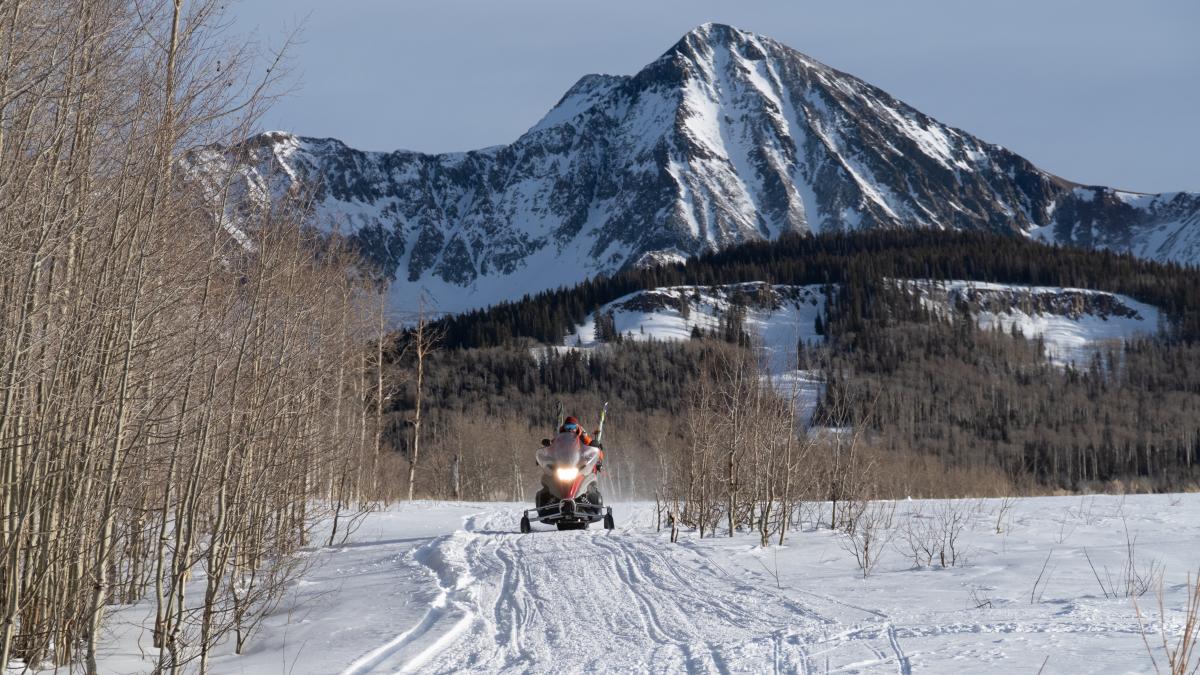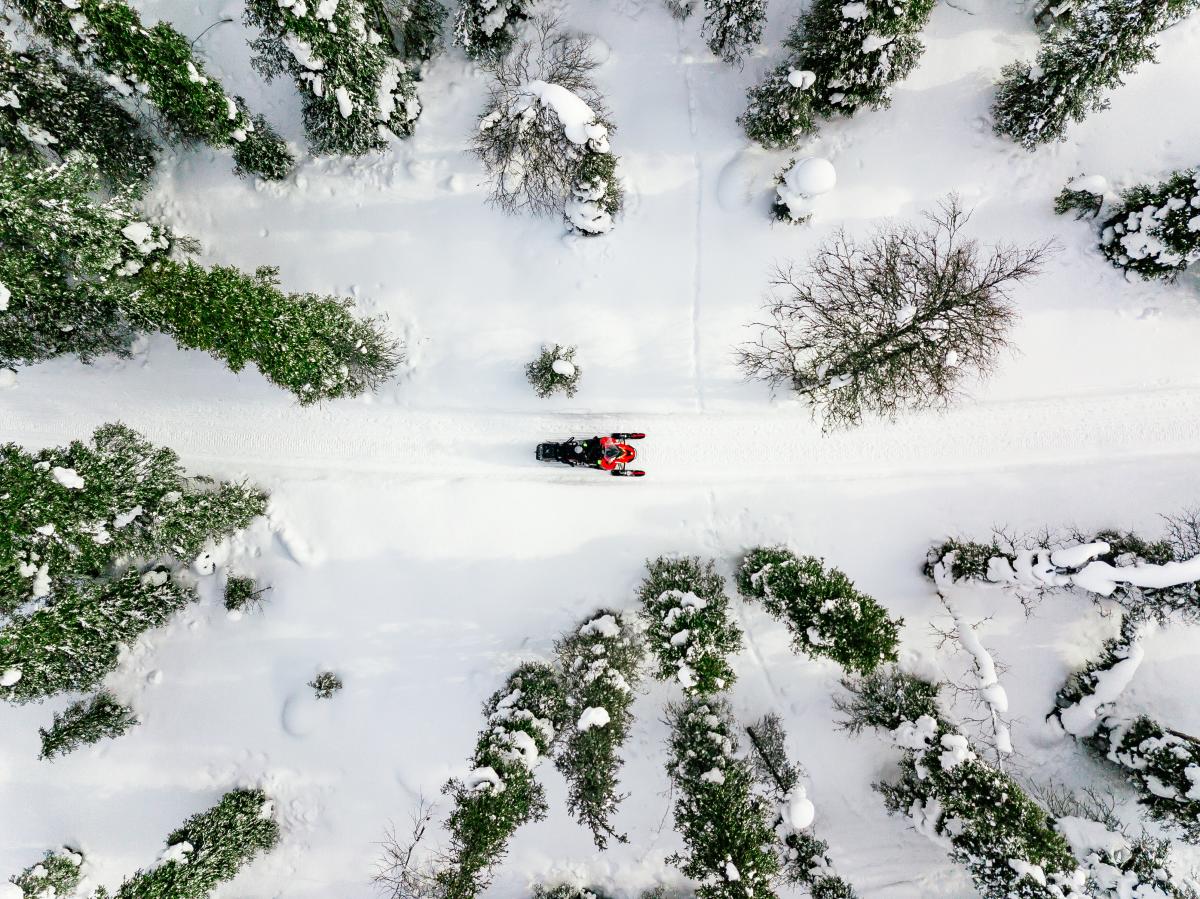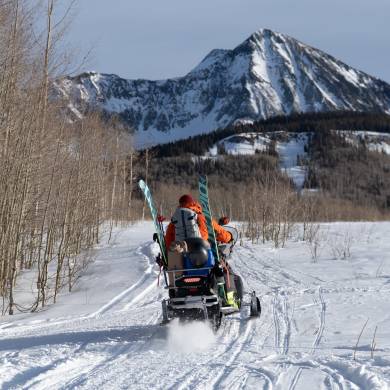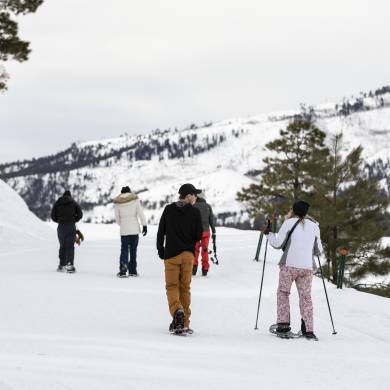- Home
- Places to Go
- Downtown
- Lakes
- Mountains
- Museums
- National Parks and Monuments
- Rivers
- State and Local Parks
- Trail Systems
- Wilderness Areas and Forests
- Home
- Things To Do
- Agritourism and Farms
- Arts
- Attractions
- Family Friendly
- Guides
- Health, Spas, and Wellness
- Outdoor Adventure
- Scenic Drives
- Shopping
- Home
- Lodging
- Bed and Breakfasts
- Cabins
- Campgrounds and RV Parks
- Hotels and Motels
- Lodges
- Vacation Rentals
- Home
- Eat
- Bars, Distilleries, and Wine
- Breakfast and Brunch
- Breweries and Grills
- Casual and Family-Friendly Dining
- Coffee and Tea Shops
- Farm-to-Table
- Fine Dining Options
- Food Trucks
- International Dining
Snowmobiling in Durango
Imagine it’s winter, and you’re sitting astride a snowmobile. With reckless abandon, you hit the ignition switch, crank the throttle, and send off onto well-groomed corduroy tracks. It’s an all-day affair, and the four-stroke combustion engine hums along as you tear up backcountry powder with a grin.
In the Durango area, that’s a common occurrence. Many residents patiently wait to take their rigs to snowmobiling hubs like Molas Pass and Missionary Ridge throughout the summer and fall. It’s well-supported, too, with multiple organizations helping groom the dozens of winter tracks you can find.
Come to Durango in the winter to realize your wildest snowmobile dreams. Like our other outdoor pursuits, you’ll see why our snowmobiling is second-to-none. It might just become your next family holiday ritual.
Places to go Snowmobiling
Near Durango, there are many places where you can go snowmobiling in the winter. You can take your machine out in late November at the earliest, though you may have to wait until early or mid-December.
Most routes are groomed by the San Juan Sledders Club and the Silverton Snowmobile Club, with high-quality snow machines. The two organizations have upwards of 400 miles of winter recreation trails to discover.
However, if you’re feeling industrious, you can take a pair of snowshoes and pack down your route if regulations permit.
Molas Pass Area

Located 40 miles north of Durango lies the serene Molas Pass area. It can be accessed from Highway 550 and has commanding views of the Grenadier Range and Needle Mountains. Most trails are for all ability levels, but the western sections become moderately tricky as you gain elevation.
Be advised that there are no snowmobilers allowed in and around Andrews Lake. Additionally, there are no marked or groomed trails from the top of Molas Pass to Lime Creek; however, the Silverton Snowmobile Club does use Skandics to pack the trail and access open powder areas. None of the trails in that area are marked, though it is clear where you should ride.
The trails around Molas Lake are all groomed and marked with the CDOT-approved highway crossing.
La Plata Canyon
The 9.25-mile La Plata Canyon Road is groomed and maintained every winter by local volunteers and is a fun ride through towering snow-capped peaks. However, the higher points in the canyon are infrequently groomed, so you may have to explore to find access points if you want a steeper climb.
Missionary Ridge Area
If you're going to stay closer to town, the San Juan Sledders Club has you covered. During the winter, they groom a 14-mile track on Missionary Ridge that has knife-point turns in the beginning. Overall, the route gains about 2,000 feet of elevation and offers stunning views near the end.
Don’t worry, though: the whole course is scenic and crosses South Fork Coon Creek, North Fork Coon Creek, Pole Creek, and Camp Creek. Additionally, you’ll catch a glimpse of Wallace Lake, Henderson Lake, and the 2002 Missionary Ridge Fire area.
In the beginning, less-seasoned riders can take their time climbing the ridge. However, advanced riders can find more technical challenges toward the end of the route. There are also numerous ungroomed old mining roads to explore throughout the ride.
Vallecito and Lemon Reservoir Area
Located roughly 20 miles northeast of Durango, you can investigate several groomed and ungroomed trails near the Vallecito and Lemon Reservoirs areas. Here, the San Juan Sledders Club grooms and maintains about 10 miles of tracks in these areas throughout the winter.
In the Lemon Reservoir area, you can find the out-and-back 4-mile Lemon Reservoir track, which gains almost 3,000 feet of elevation quickly. This ride has fantastic views of McCoy Gulch, McClare Canyon, and Miller Mountain (11,729 feet) on the way up.
To the west, near the Vallecito Reservoir area, you can discover the 6-mile out-and-back Vallecito Middle Mountain track. This route also gains about 3,000 feet of elevation, and you’ll find many ungroomed meadows and U.S. Forest Service roads to play on. It creeps up along the western face of Middle Mountain (10,581 feet) and ends in Tuckerville, a historic mining town.
West Mancos

You can find a vast 40-mile network of groomed trails about six miles north of Mancos, Colorado. The San Juan Sledders Club also maintains this area and features two massive loops that cross the West Mancos River, Turkey Creek, and Lost Canyon Creek, respectively.
From the trailhead, the eastern loop gains upwards of 4,000 feet of elevation and puts you within a mile of Sharkstooth Peak (11,691 feet). The western loop is relatively flat and ends doubles back near Haycamp Mesa, where you might find centuries-old Basque and Spanish aspen etchings.
Any off-trail riders should be avalanche-ready in this trail system.
Things to Know About snowmobiling in Durango
-
Always check the weather forecast before riding out.
-
If you plan on going into the backcountry, leave an itinerary of your trip with someone you trust. Also, bring a satellite-capable communication device if you can afford it.
-
Bring plenty of water and food with you.
-
Familiarize yourself with the snowmobiler’s code of ethics before your trip.
-
If you do not own a snowmobile, fret not! Pirate Adventures offers regular snowmobile tours in the winter.
-
Make sure your machine is in top condition before every ride.
-
Educate yourself on avalanche safety and best practices, and remember that mountain slopes are not the only place where avalanches can occur.
Care for Durango
-
Purchase a CORSAR card before going out into the backcountry.
-
Follow Leave No Trace (LNT) principles.
-
Do not engage with or feed the wildlife.
-
Yield to non-motorized traffic.


